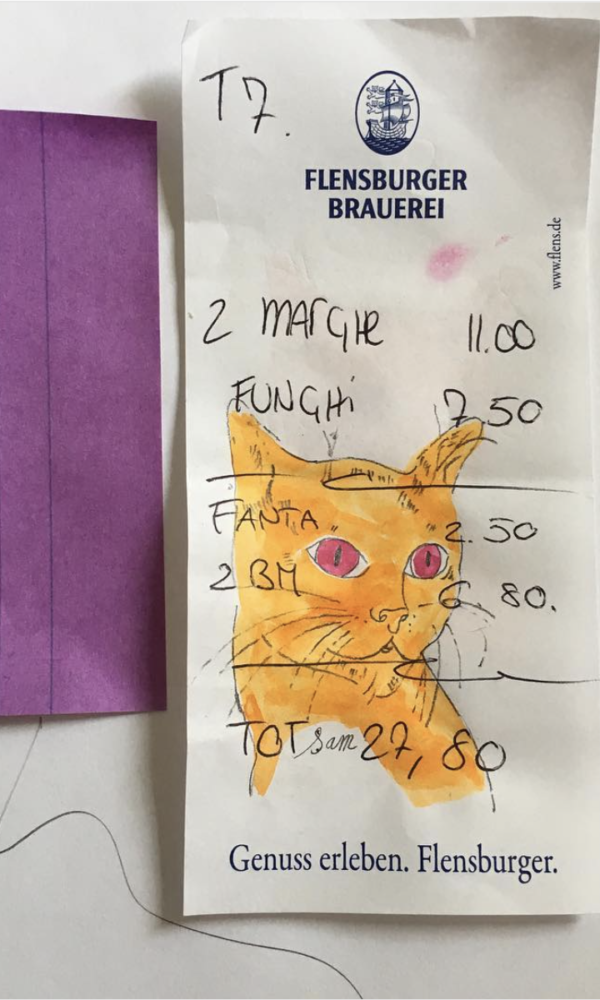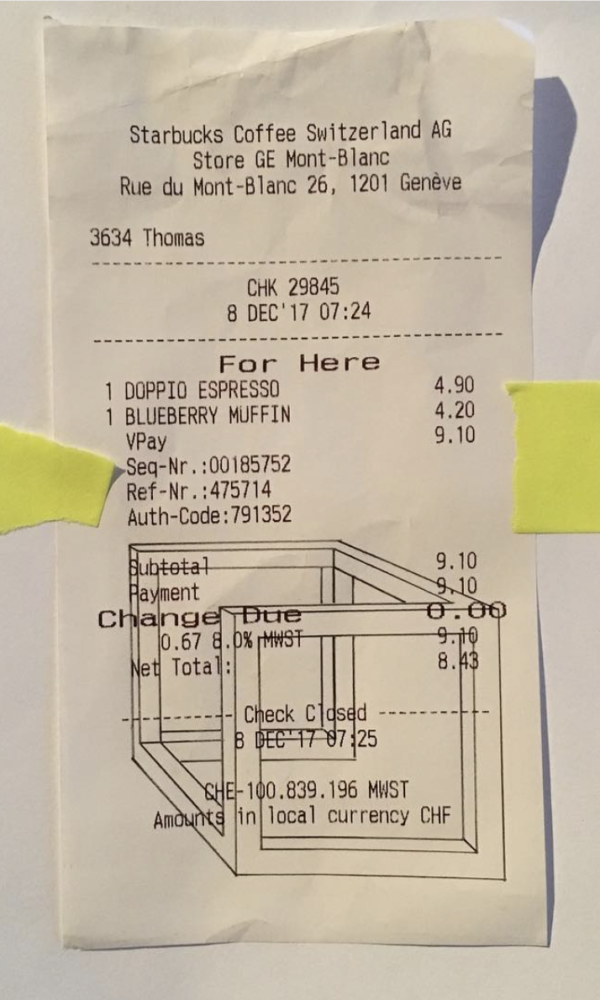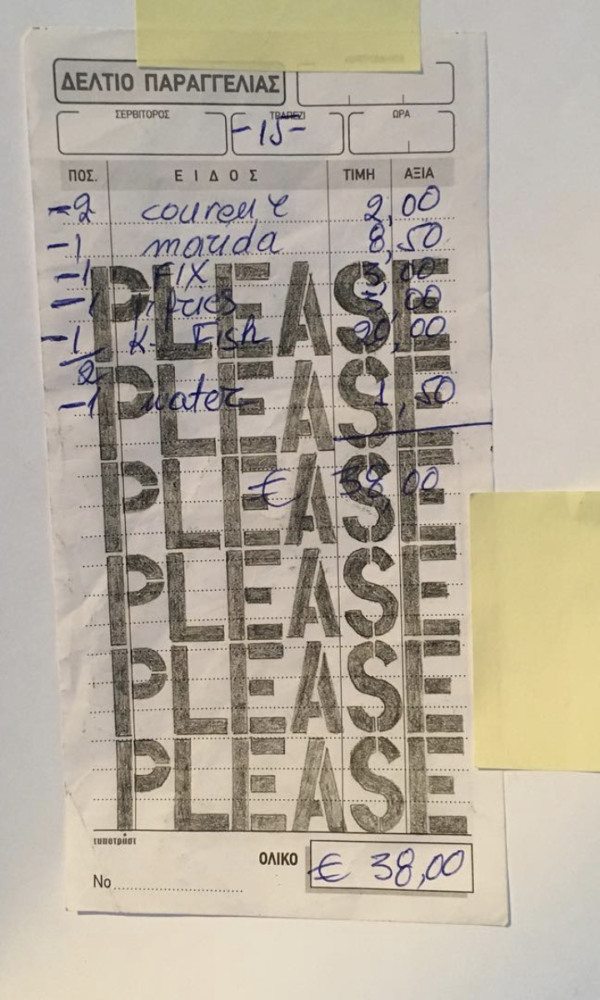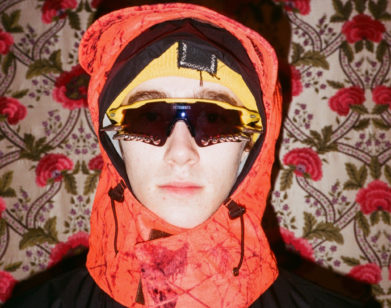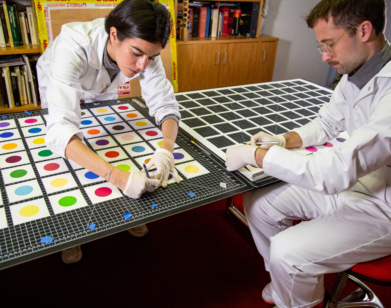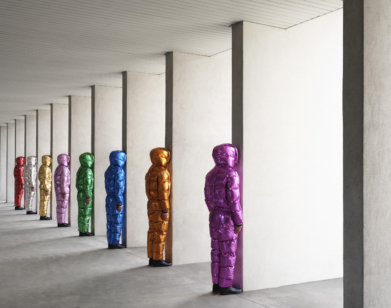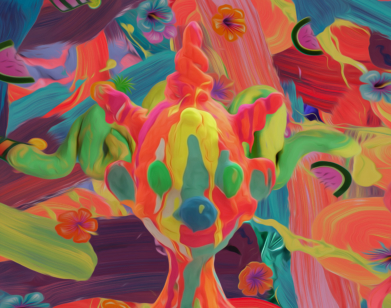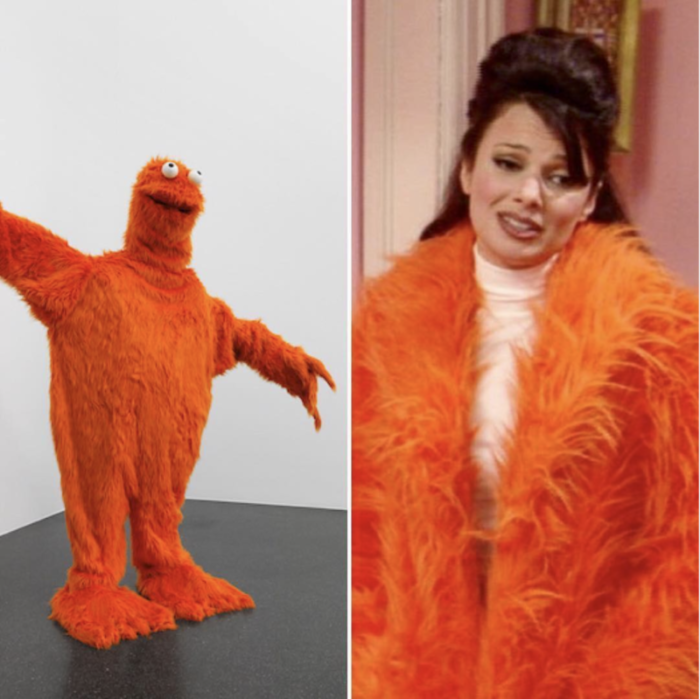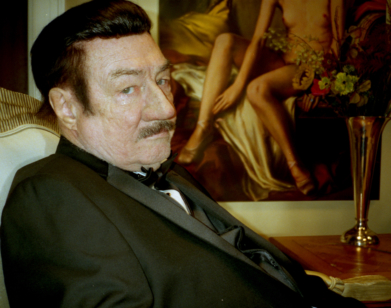INTO: The Receipt Doodle Masterpieces of Jonathan Monk
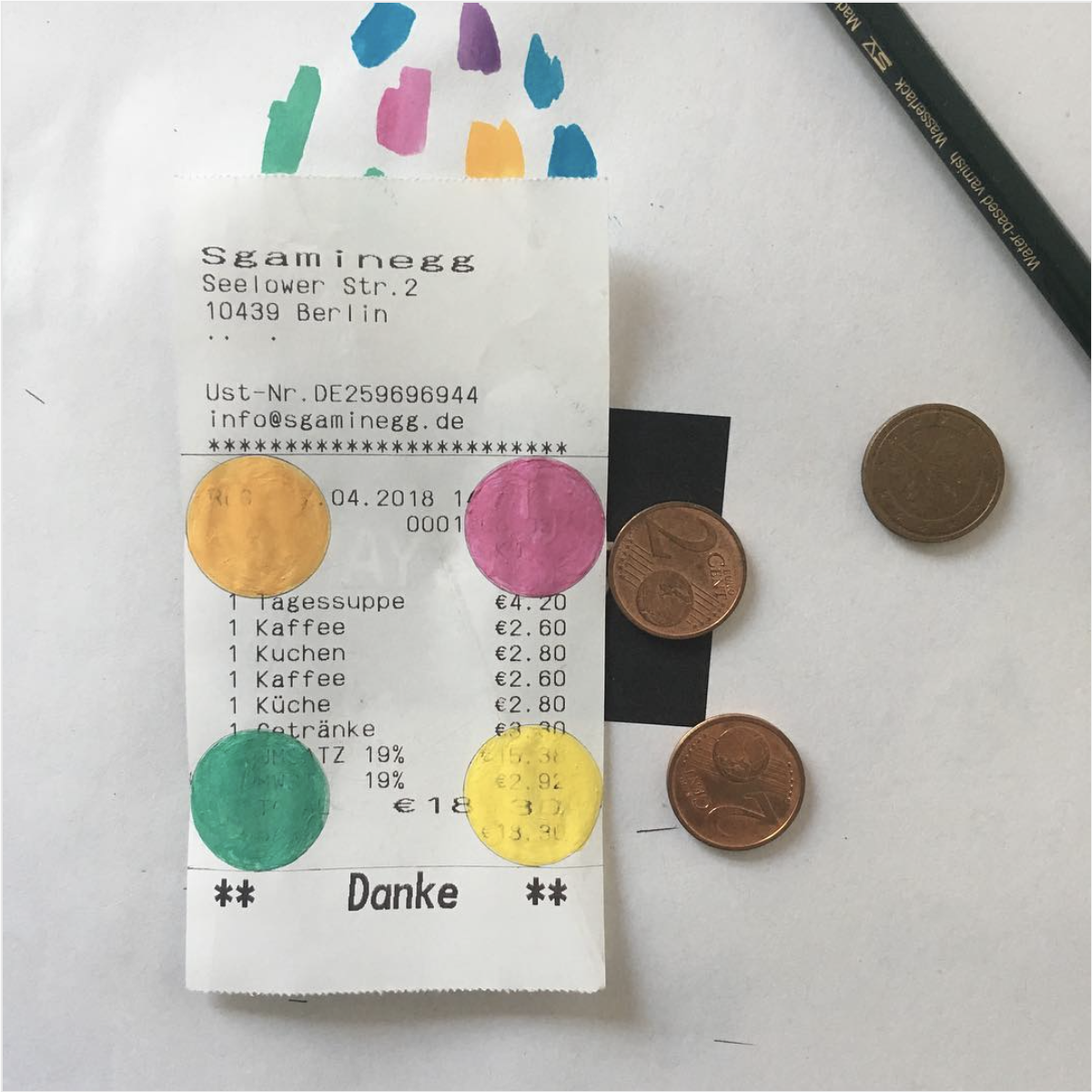
Image courtesy of @monkpictures.
“Into” is a series dedicated to objects, artworks, garments, exhibitions, and all orders of things that we are into—and there really isn’t a lot more to it than that. Today: Mat Ferraro investigates the trash-turned-treasure receipts of contemporary artist Jonathan Monk.
Crumpled into tiny balls, jammed in our back pockets, strewn in little piles around the perimeters of trash cans: receipts are everywhere, and yet their artistic potential has been largely ignored. Berlin-based artist Jonathan Monk, however, has adopted them as his own personal canvases, transforming the mundane objects into re-creations of contemporary art masterpieces. His receipts, of which there are over 100, are now on view at the at the Casey Kaplan gallery in New York and available for purchase, for the price of the meal indicated on the receipt and the cost of framing. Doodling on his own meal receipts, Monk pairs Sol LeWitt geometrics with the mechanical typewriter text of Chinese restaurants, and freeform Andy Warhol cats with the fluidity of hand-scrawled tabs for mushroom pizza and Fanta. Monk—following in the footsteps of Dada masters like Duchamp—reframes the banality of everyday life, imbuing common objects with artistic bravado and giving viewers hope that, one day, their own receipts might cultivate a mass Instagram following and maybe even wind up in a Chelsea gallery.
Among Monk’s oeuvre of trash-turned-treasures, I’m into one piece, a superimposition of Damien Hirst’s spots over a pristine German receipt for Kaffee and Kuchen, in particular. It teleports me back to my mop-headed, neon-hued childhood of eating copious amounts of delicious Kuchen and being escorted by my parents through the sacrosanct halls of the Art Institute of Chicago. Hirst’s “Tetrahydrocannabinol,” a massive nine-by-eighteen display of vibrantly-colored, evenly-spaced spots, is the first work I ever learned by name. Reminiscent of a Twister mat or those little candy dot strips, the painting etched itself within my six-year-old brain, my gateway drug to the world of contemporary art. I would stare at it for hours, furiously investigating its spots, trying in vain to disprove my dad’s claim that each dot was identical in size but different in color. Monk’s rendition sparks this childlike curiosity, marrying the innocuous whimsy of a receipt doodle with the magnificence of high art. Above all, the receipt reminds me that all we need to transform something from an ever-present annoyance to a coveted magnum opus is a vibrant imagination, some colored pencils, and a little free time after dinner.
———
